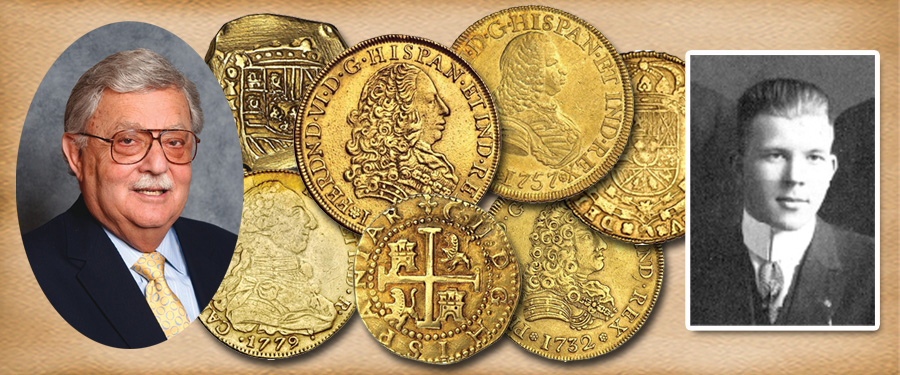
Among his many collecting interests, Mr. Lilly was
an advanced stamp collector who approached this discipline with the same spirit
as he did coins. He told me how he waited over a decade to add the famous “2 Cent Black” (the first stamp used
in England) to his collection. Like
the 1822 half eagle, when it became available, he did not hesitate.
He also told me about knowing that Col. E.H.R.
Green owned the
sheet of 24-cent postage stamps with
the airplane printed upside
down on it — the only known
sheet. After Col. Green died
the sheet of 100 was dismantled, and taken out of it was a block of four with a plate number. This became a
prize sought by many collectors. Mr.
Lilly waited for two decades for a chance to buy this desirable rarity.
When it came up for sale, he
pursued it and got it. This stamp
was known as the “Jenny,” the first plane to fly the mail.
To explain his collecting philosophy: he wanted to acquire many great rarities and,
as he would say: “The opportunity might not happen again,” at least while he
was alive.
The desire for completeness and to have world-class
collections
of the different collectibles he
desired was a great motivator. He was fortunate to have been able to afford important acquisitions as
they came available. As he built the various accumulations he had great pride
in what he was able to accomplish.
Of course, few have the virtually unlimited funds
to pursue their
hobbies that Josiah Lilly enjoyed.
But, one of the benefits of collecting is that pride and satisfaction can come
not only from a collection of the very finest and rarest items, but also from
building a small circulated coin collection of any type. Searching for,
choosing, and purchasing the best possible coins (or other collectibles) that
are within a budget, can also bring a great sense of accomplishment.
It is this satisfaction and accomplishment that
drives collecting at any level and makes a true collector. Over the years I
have had the good fortune to know and serve many such true collectors and it
has greatly affected my love and devotion to numismatists and to numismatics.
It was while serving the interest of Mr. Lilly and
other collectors in the 1960s that Stack’s came up against certain regulations
that discouraged collectors from pursuing their goals. These regulations almost shut off the supply of coins and restricted our
ability to help build the J.K. Lilly into a world-class collection. I
will tell more about this in my next article.





